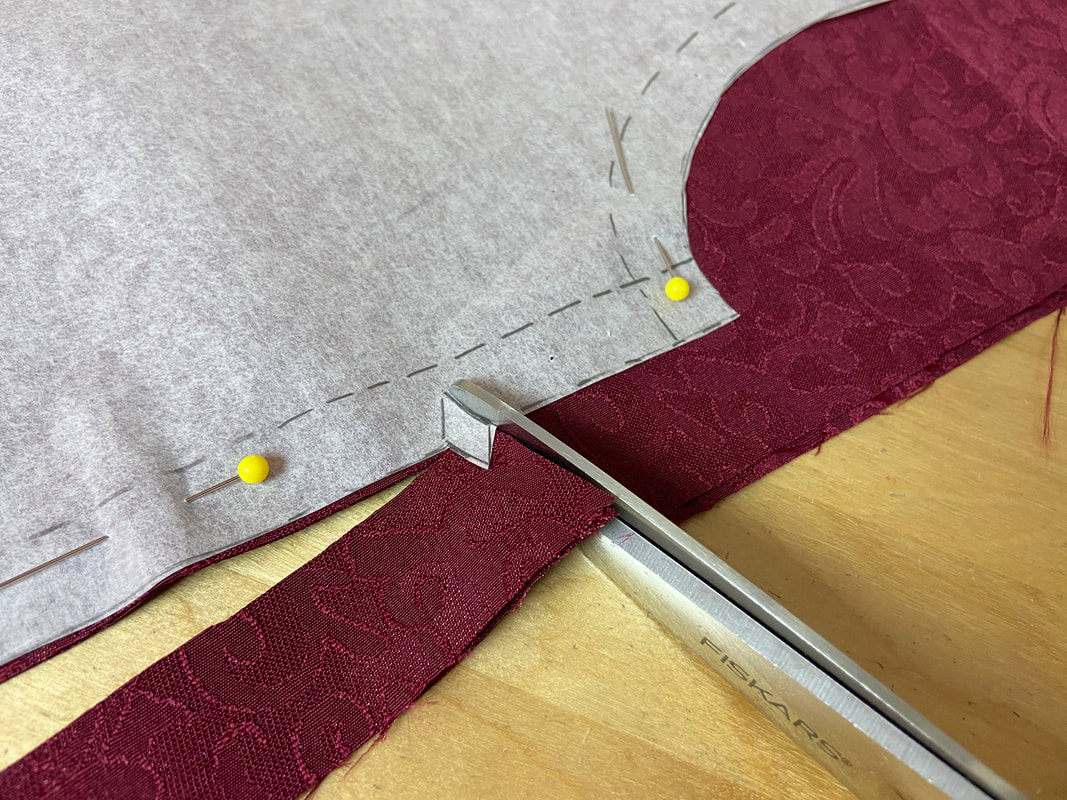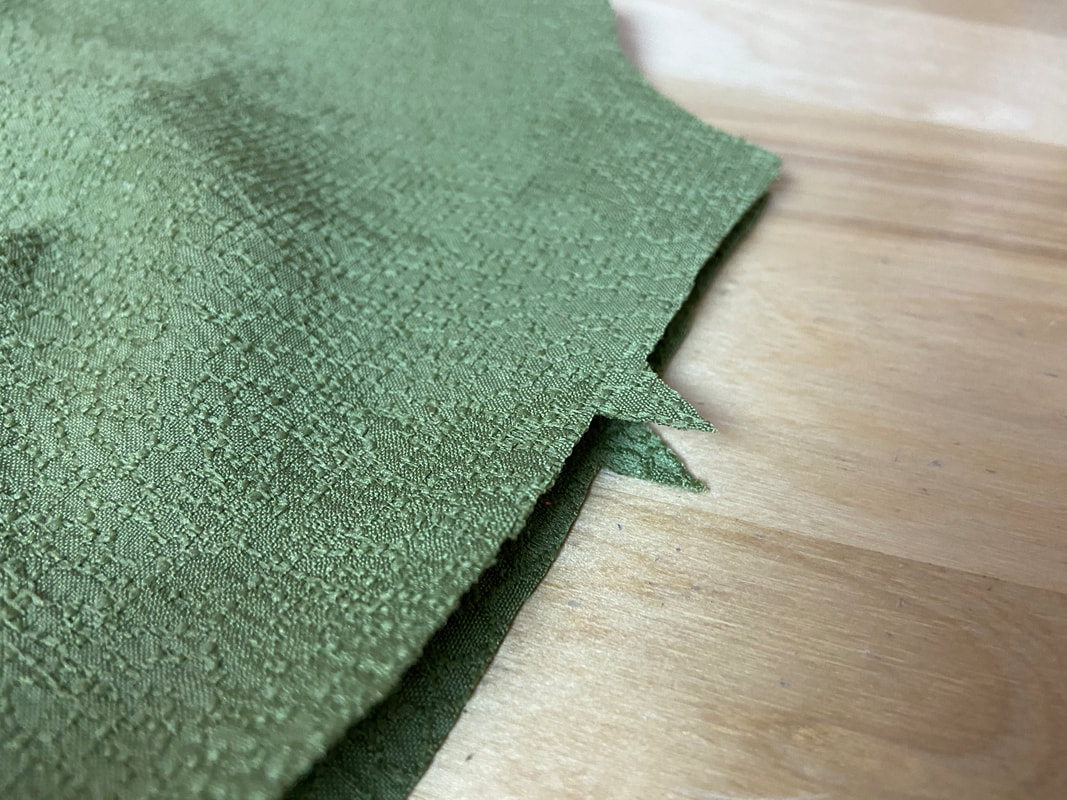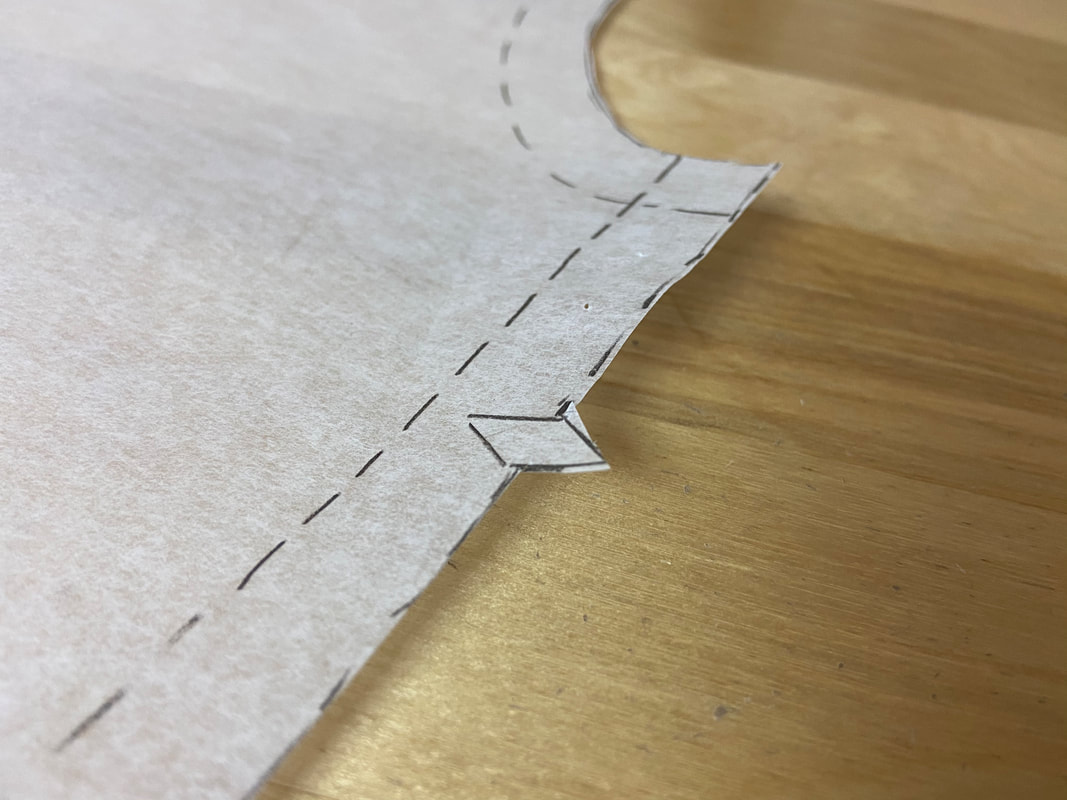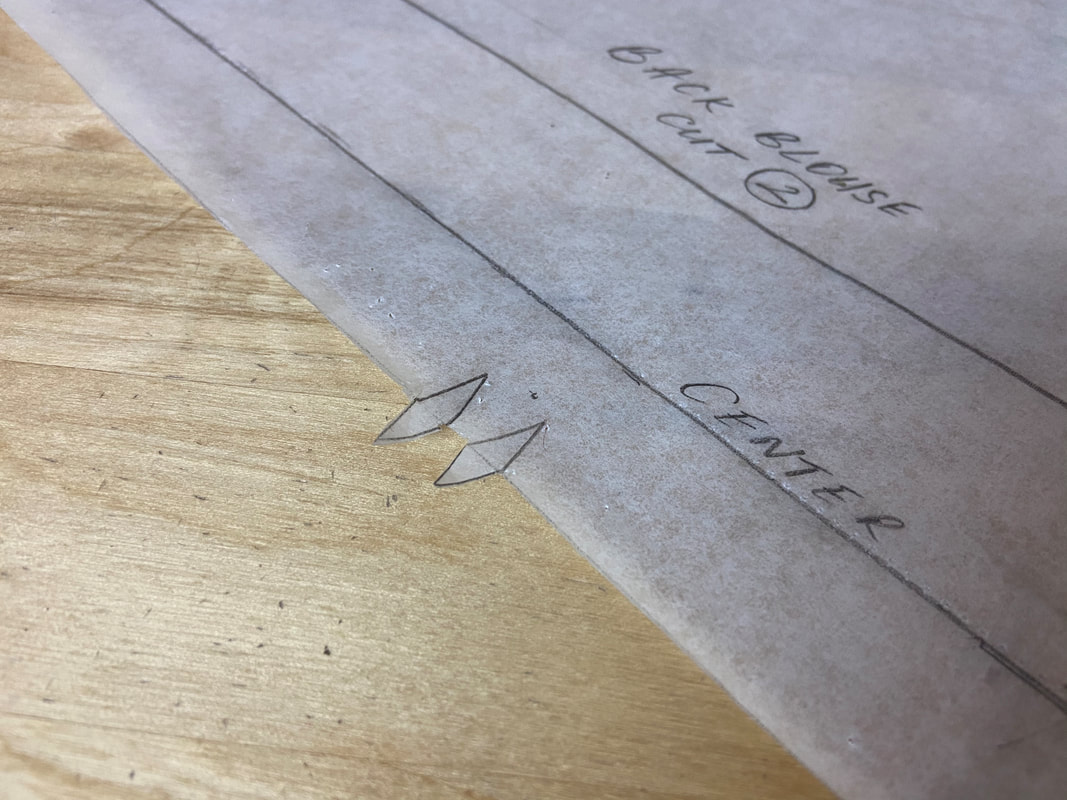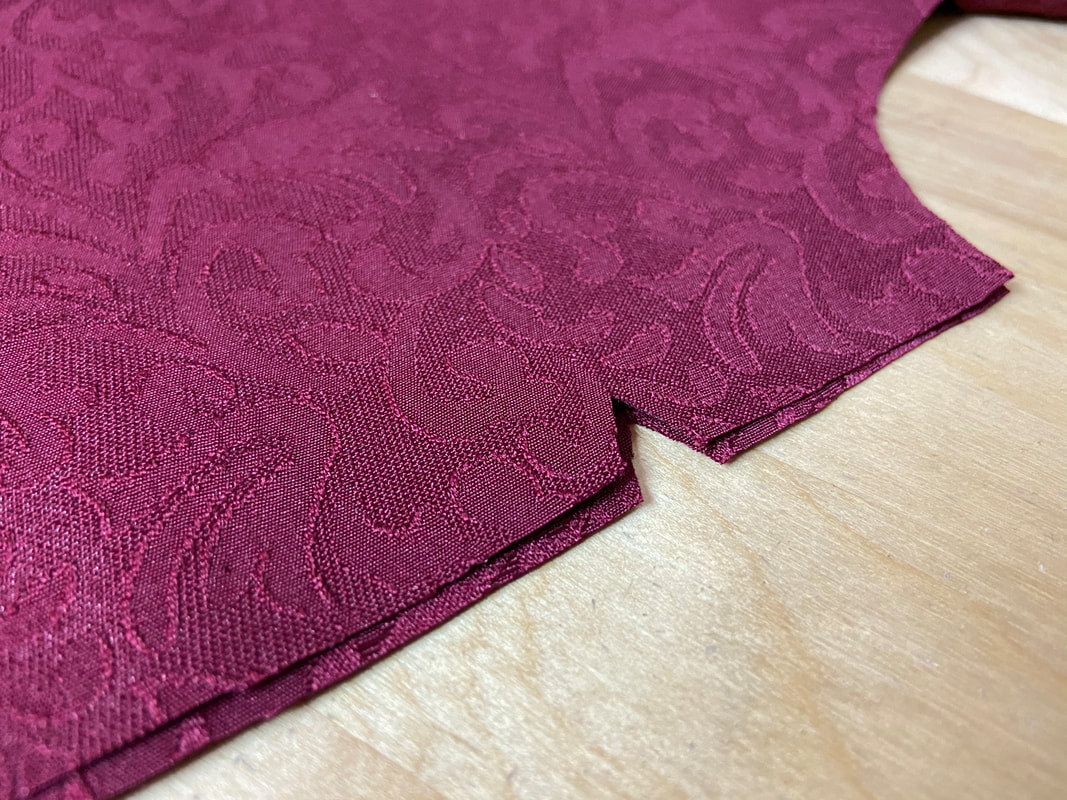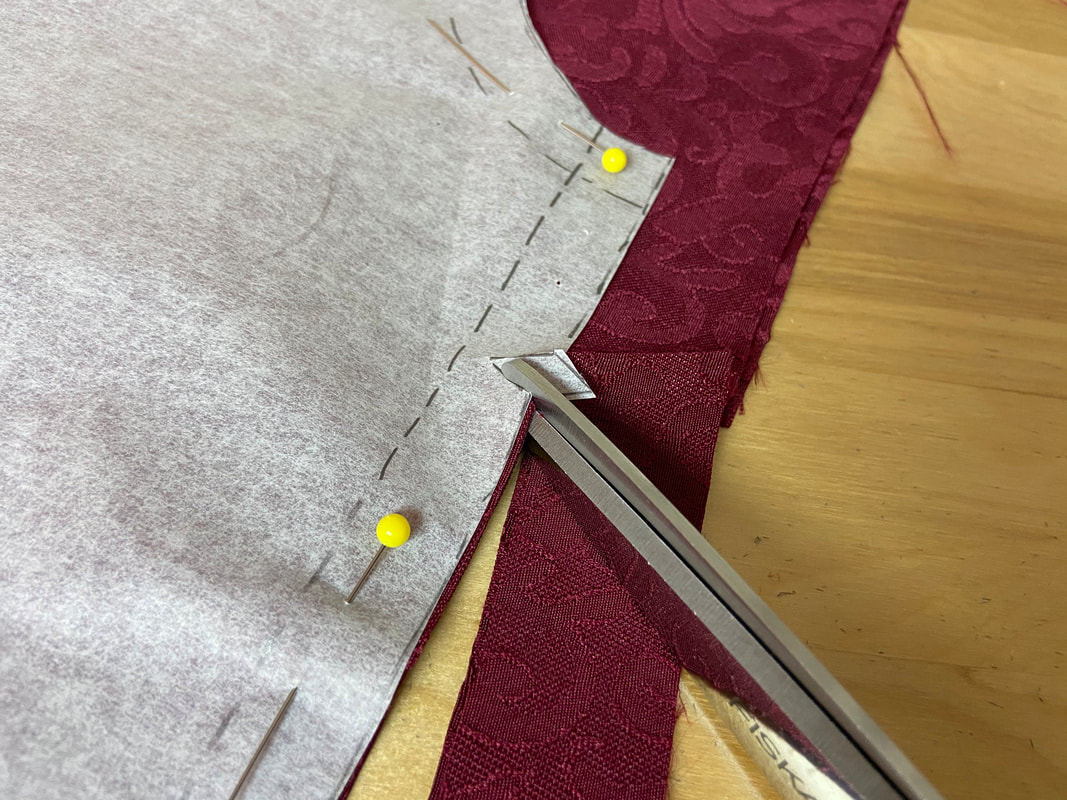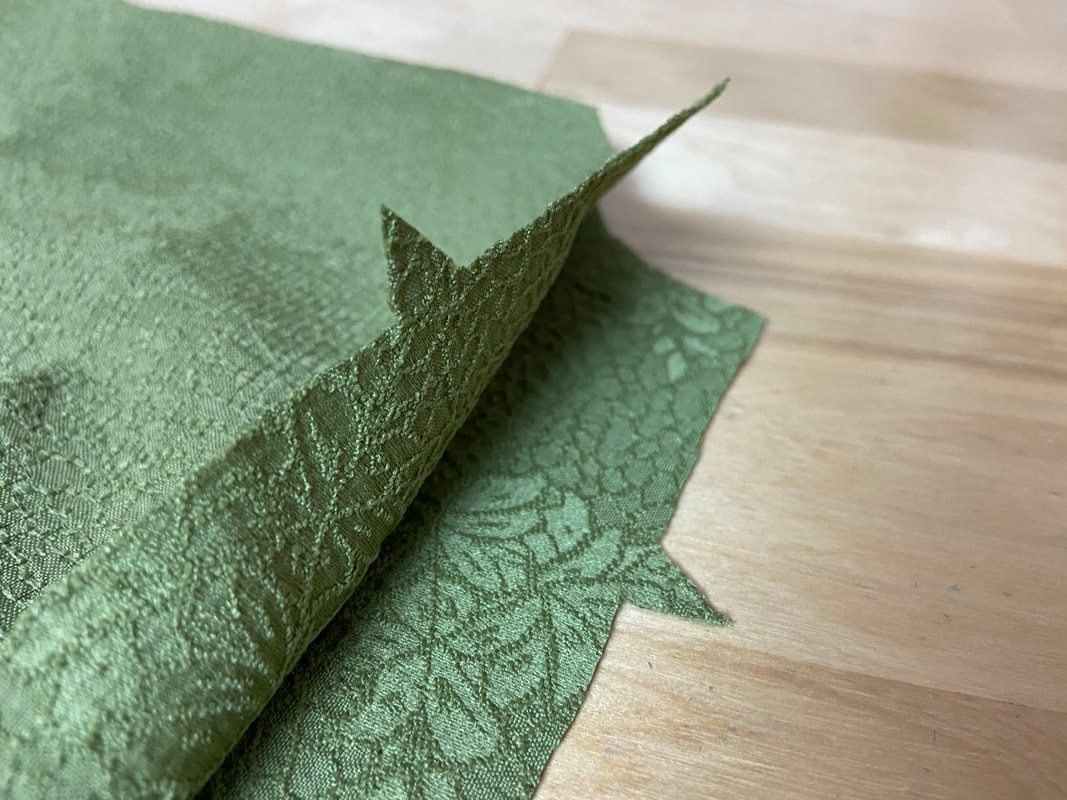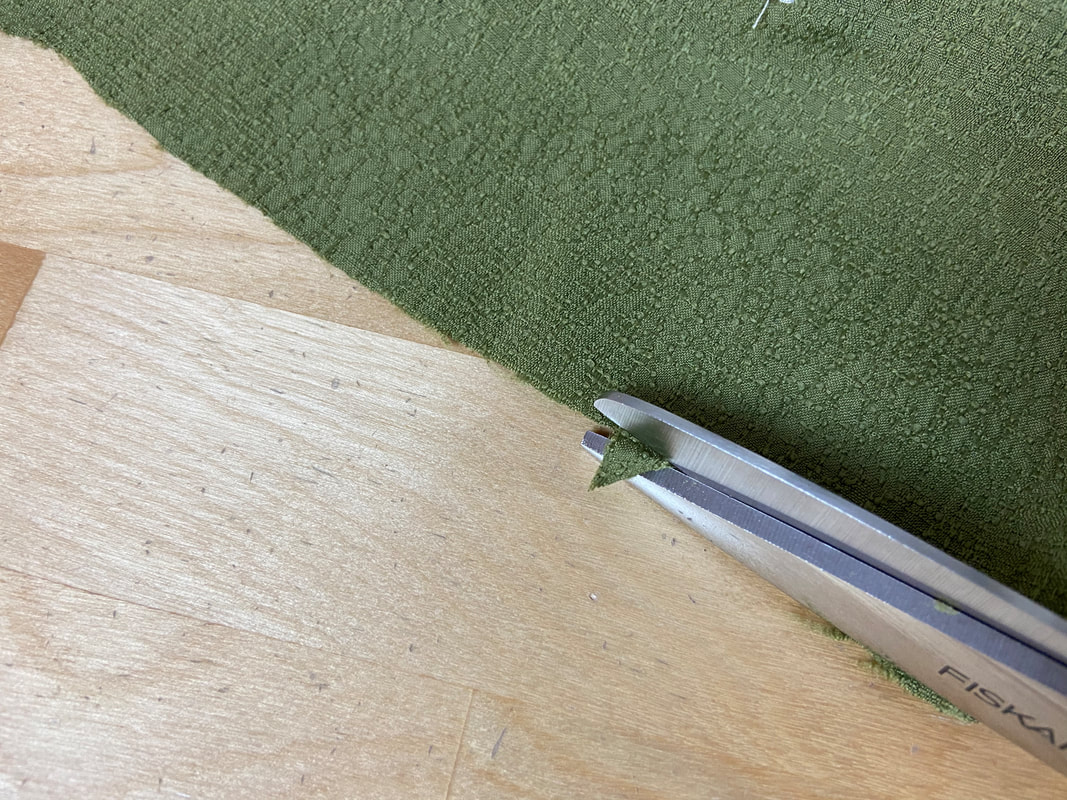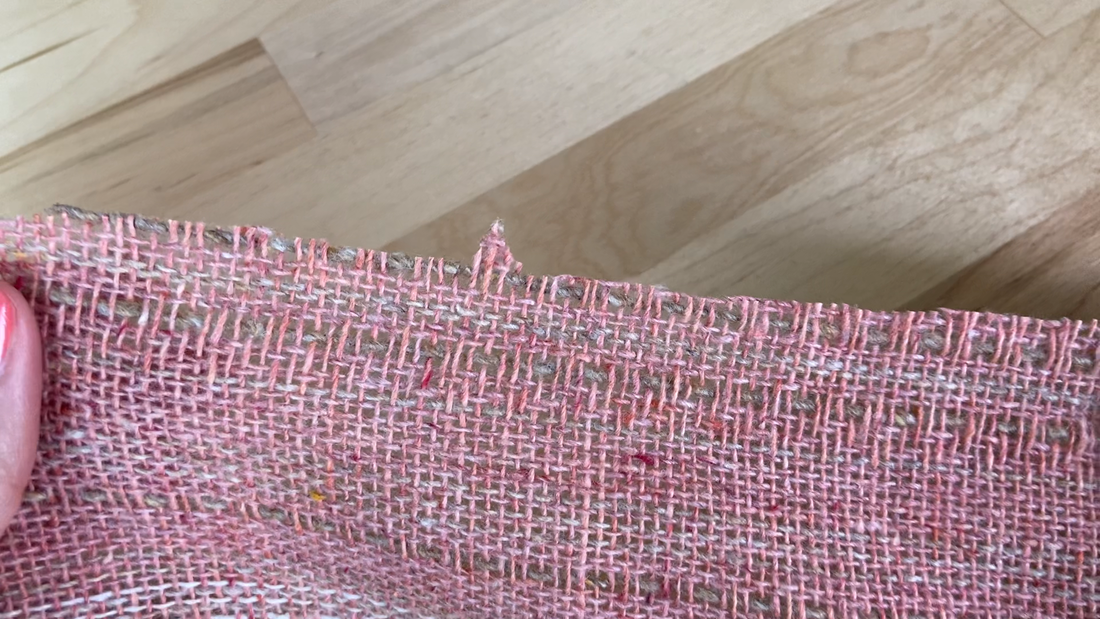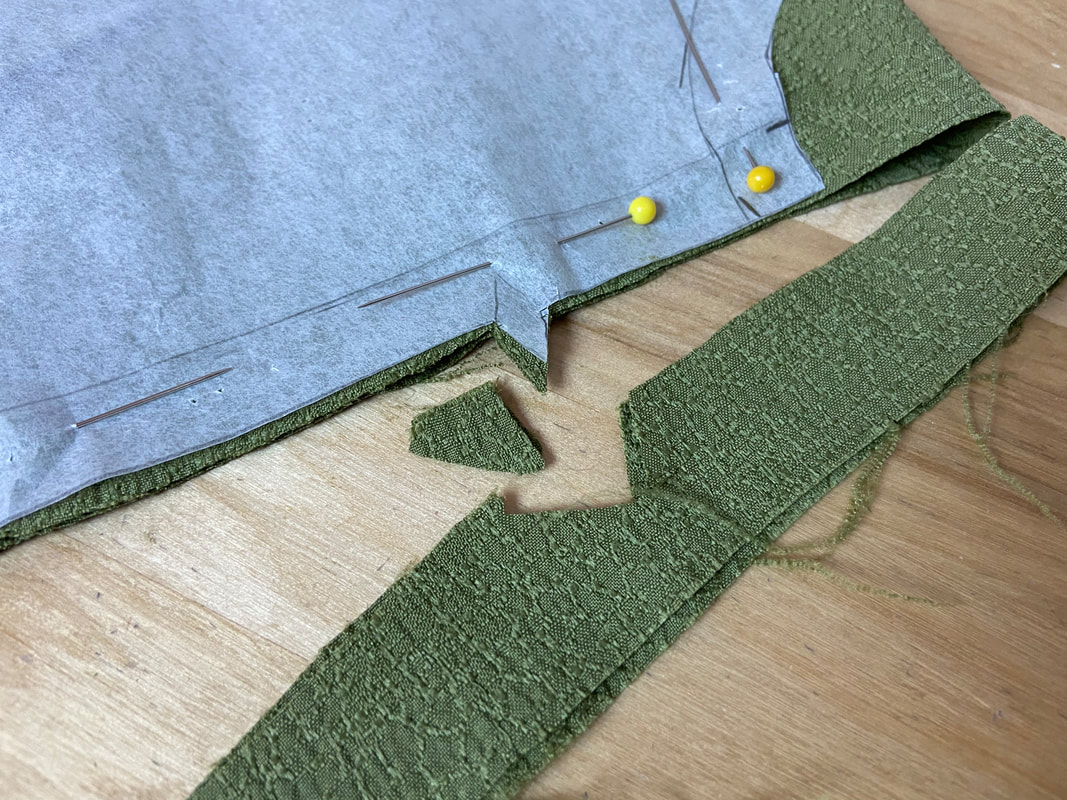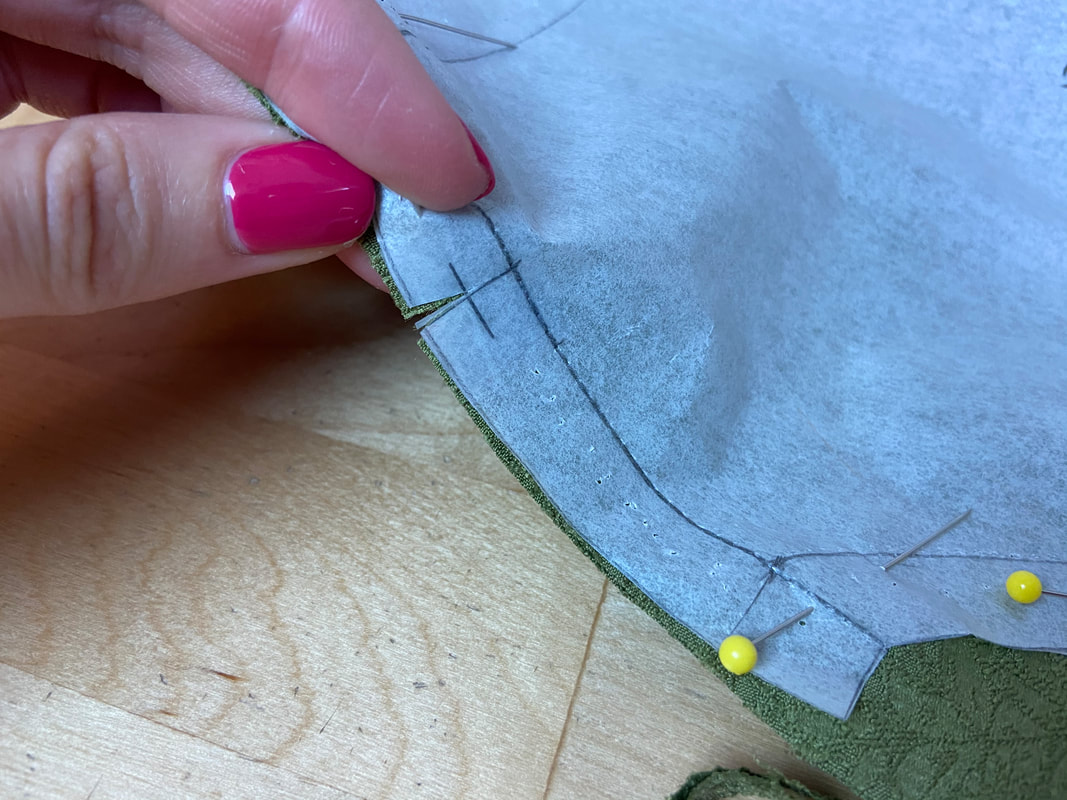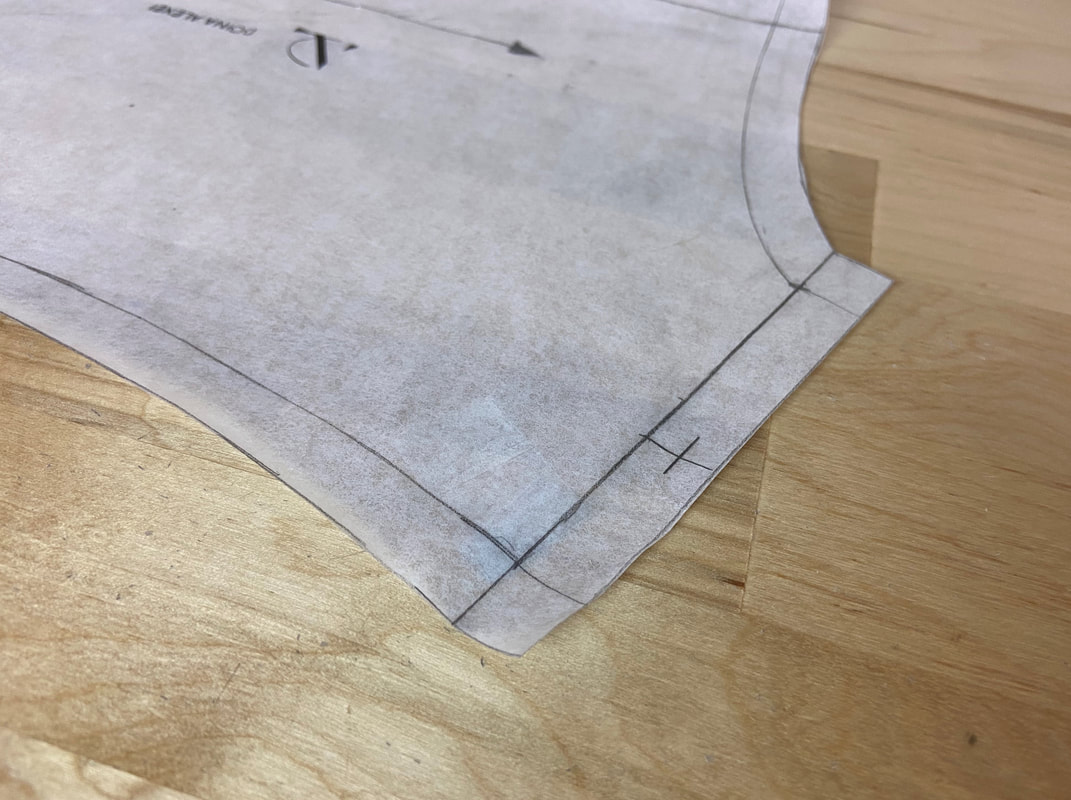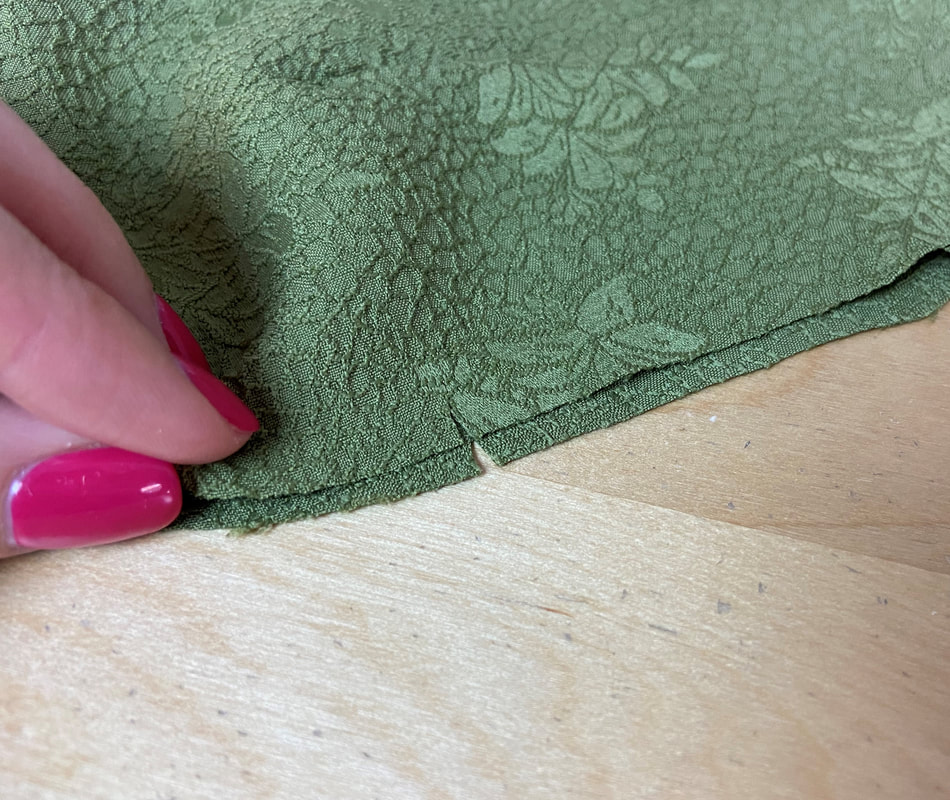Notches are triangular shaped wedges or plain slashes added at specified locations along the seam allowance edge. They provide an important guideline for matching up corresponding seams and edges in the sewing process.
The notches described in this tutorial should not be confused with "notching curved edges for tension release", a topic which is explained in this tutorial: Notching Seam Allowance For Tension Release.
Notches are transferred from the paper patterns onto fabric at the marking stage, prior to separating the fabric from the pattern.
The way notches work is simple: The triangular “wedges” on one seam edge should have a perfectly matching “wedge” on the other corresponding portion constituting the seam. The seam of course, should be aligned in the correct orientation with fabric face sides touching.
Seam edges can have single, double and even multiple notches side by side. The number of notches is a good giveaway for whether the fabric pieces correspond to the front or back of the garment.
Single notches are usually located on the front and sides of the garment.
Double notches are used to denote back seams.
There is an exception: When a front fabric edge is sewn to a corresponding back edge, these two seam edges should only have single notches, regardless of whether the pieces correspond to the front or back. This is always the case with garment side seams.
Triple notches are often used to denote the location of where zippers end (usually along the center back). Triple notches are also placed along unique seam edges that require a distinction from the rest of the garment’s seams.
Three Notching Styles Used In Dressmaking
When you look at a store-bought paper pattern, transferring its notches onto fabric can often feel confusing especially if you are a sewing beginner.
There are 3 types of notching styles used in dressmaking. The notching method you choose will depend first on what is noted on your pattern and second, the way you prefer to cut these notches on your fabric – the latter refers to triangle notches only.
Inward-Cut Triangle Notches:
Inward triangle notches are cut within the seam allowance such that the angular point is directed inwards, toward the body of the pattern.
This notching technique requires that a wedge is cut within the seam allowance. This is of course done before the paper pattern is separated from its corresponding fabric piece.
The triangle clip should never go past the halfway width of the seam allowance. This measure will prevent you from accidentally cutting through the actual seamline. Regardless, you should always exercise lots of care when marking these inner triangle notches.
On the sewing pattern, inward notches should be marked very clearly with a triangular shape. The point of the triangle should never go past the halfway point of the seam allowance.
While inward notches are very visible during the seam matching process (and very easy to align), they do leave a permanent cut in the seam allowance. For that reason, inward notches are not recommended for use with highly fraying fabrics, or a seam finishing method that cannot be completed if the seam allowance is clipped. In cases as such, outwardly marked triangle notches should be used instead.
Inward-cut notches are also not appropriate for very narrow seam allowances, such as 1/4” and less.
Outward-Cut Triangle Notches:
As opposed to inward triangle notches, which are cut within the seam allowance, outward triangle notches are cut as triangular extensions, pointing away from the seam allowance.
These outward notches are very visible along the seam edge. Since they do require cutting into the actual seam allowance, outward-cut notches are safest to use. For that reason, this notching style is best for beginner-to-intermediate dressmakers.
Outward-cut triangle notches are also trimmed off after the seam has been stitched and prior to clean finishing the seam allowance. This leaves a smooth seam allowance edge which provides a great canvas for all seam allowance finishing techniques.
These notches are also best to use with highly fraying and fine fabrics since they minimize the amount of cuts added into the fabric’s raw edges.
As opposed to inward-cut notches, the outward extension notch is appropriate for use with very narrow seam allowance (1/4”and less) as it does not require clipping into the actual seam allowance.
On most commercial patterns, inward and outward notches are marked as-one to give you a choice between which you prefer to use. Thus, it is up to you and your fabric to decide if you want to cut your notches inward or outward.
If unsure, always cut your notches outward as this is not only the safest option, but the notch extensions are also removable once the seams are matched and stitched.
T-Shape Slash Notches:
On a sewing pattern, slash notches are marked with a “T” symbol, extending horizontally within the seam allowance. When transferred from pattern onto fabric, the leg of the “T” is slashed to notch the seam edge.
Although slash notches are the least visible, they are the fastest to apply. Due to their simplicity and speed, these notches are mostly used by advanced dressmakers, and clothing manufacturers. That’s because a trained eye can easily spot which seams are matched in the sewing process without relying solely on notches- the slash notches are just there for added reference/confirmation.
These simple notches are also easier to use in the pattern drafting process due to how fast and simple it is to draw them. As is true for inward-cut notches, slash notches should not extend past halfway through seam allowance.
The best length for a slash notch is ¼”- 3/8” depending on the width of the seam allowance housing it.
Just like inward cut notches, slashes leave a permanent slit within the seam allowance. However, slash notches are considerably safer as they do not require a whole cut wedge to be removed. Their impact is minimal on most high fraying fabrics, and can also be appropriate for narrow seam allowance edges.

